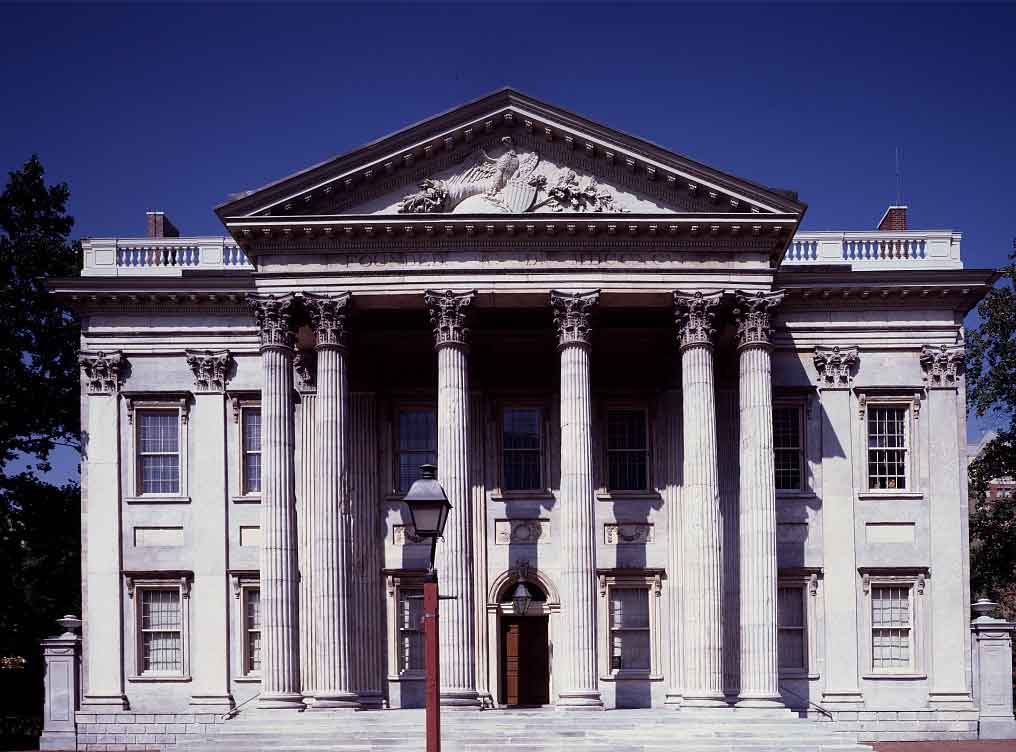First Bank of the US Founded

First Bank of the Untied States
Hamilton urged the founding of the Bank of the United States. Jefferson opposed the idea. The Bank was to be a depository of federal funds and a means of regulating the currency. Its establishment, in February 1791, strengthened the federal government.
The Bank was a crucial part of Alexander Hamilton's plan for American economic development. Hamilton aimed to establish a solid economic foundation for America to compete globally. His strategy involved raising funds through an excise tax on whiskey, implementing a tariff system on imported manufactured goods, and establishing a national bank.
The Bank of the United States was intended to establish a sound monetary policy for the country. It was responsible for holding all government deposits and issuing banknotes to replace all outstanding federal debts, thereby providing the United States with a stable paper currency. The establishment of the Bank of the United States was narrowly approved, with sectional support playing a key role. Most representatives from the Northeast supported the plan, while the majority of Southern Representatives opposed it.
Although the bank was a private entity chartered by the government, its stock was in high demand when it went on sale. Nonetheless, the bank remained controversial, with many ordinary citizens viewing it as a tool for the wealthy to become even richer.
 >
>